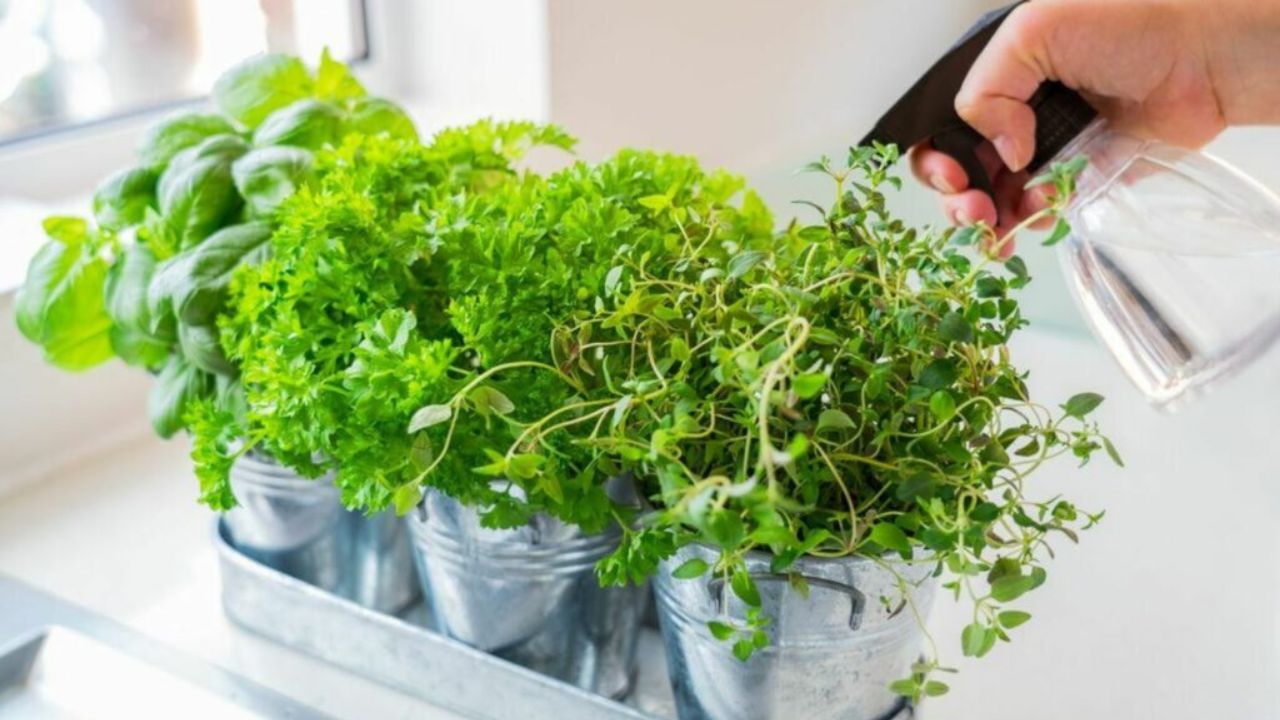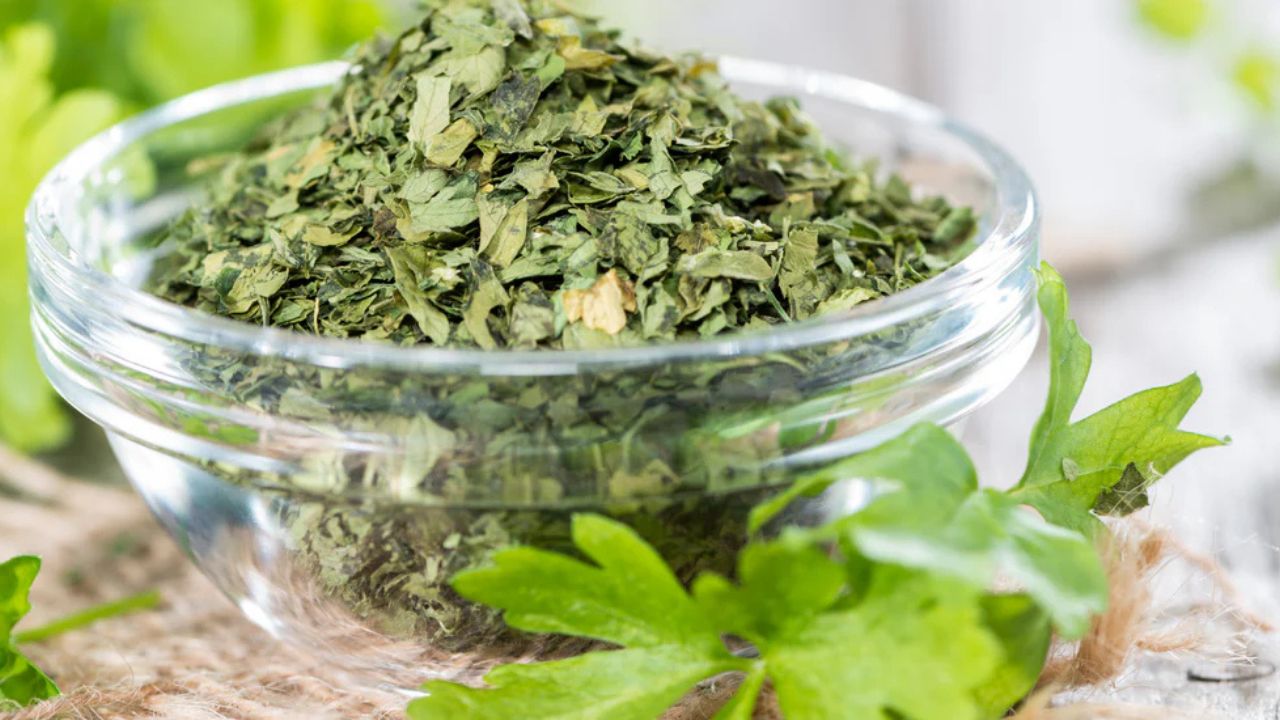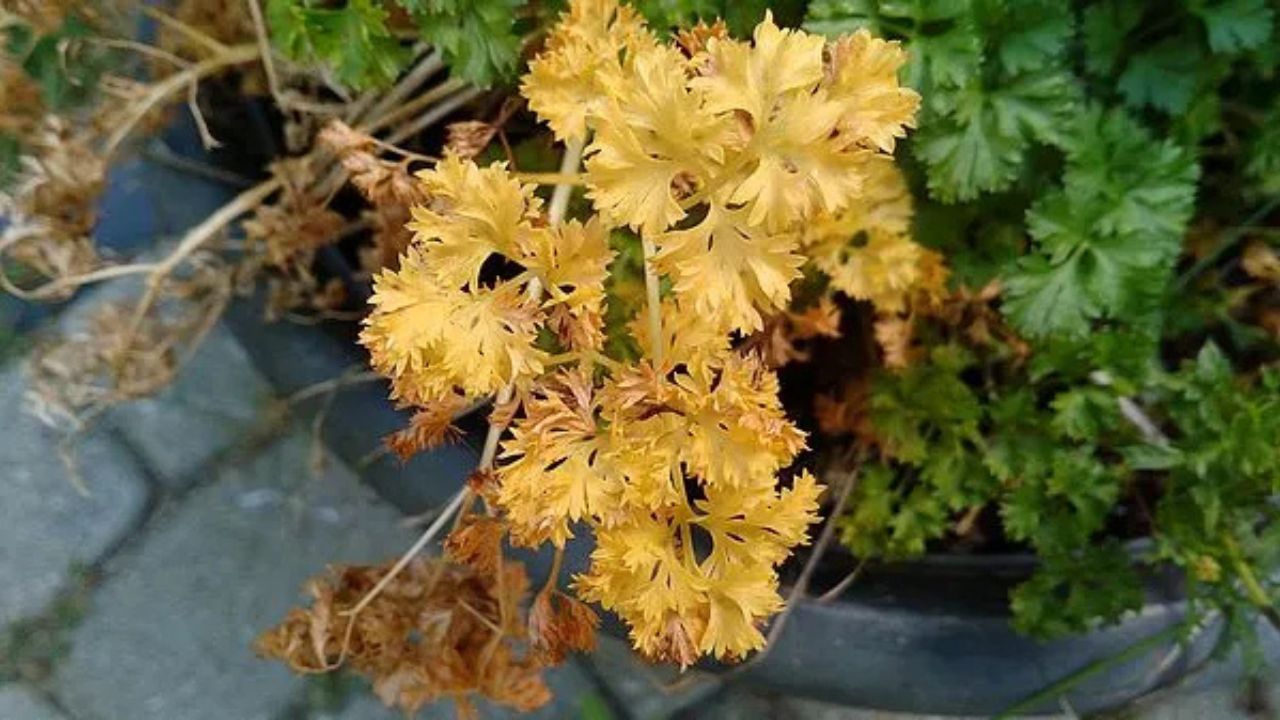Parsley thrives in consistently moist soil, but not waterlogged. Water it 1-2 times per week, adjusting for weather conditions. Ensure the soil stays moist, but avoid overwatering to prevent root rot. This guide will help you manage parsley’s watering needs effectively.
How Often Should You Water Parsley?
Parsley thrives when its soil is kept consistently moist but not soggy. As a general guideline, water parsley about 1-2 times per week, depending on the weather and growing conditions. During hot or dry periods, you may need to water more frequently, while cooler or rainy seasons might require less watering.
Consistency is key when caring for parsley. Uneven watering, such as letting the soil dry out completely between waterings or overwatering, can stress the plant and hinder its growth.
Aim to maintain even soil moisture, ensuring the top inch of soil stays slightly damp to the touch. Using mulch around your parsley plants can also help retain soil moisture and reduce the frequency of watering.
Understanding Parsley’s Water Needs
Parsley is a hardy herb that thrives in soil that is consistently moist but not waterlogged. While it enjoys steady hydration, overly saturated soil can lead to root rot and other issues.
Striking the right balance is essential to ensure healthy growth and vibrant foliage. Well-draining soil is ideal for parsley, as it prevents water from pooling around the roots while still retaining enough moisture to keep the plant nourished.
Factors Influencing Watering Frequency
Climate: In hot or dry climates, parsley will require more frequent watering to prevent the soil from drying out. Conversely, in cooler or humid environments, watering can be less frequent since moisture evaporates more slowly.
Season: During the growing season, especially in spring and summer, parsley has higher water demands due to active growth. In fall and winter, its water needs decrease as growth slows down.
Soil Type: The type of soil significantly affects how often you need to water parsley. Sandy soil drains quickly and may require more frequent watering, while clay soil retains moisture longer and needs less frequent watering. For optimal results, use well-draining loamy soil amended with organic matter.
Pot vs. Ground: Parsley planted in pots tends to dry out faster than parsley grown in the ground. This is because containers have less soil volume, and water evaporates more quickly. If growing parsley in a pot, check the soil moisture regularly and water more frequently than garden-grown plants.
Signs Your Parsley Needs Water
Proper watering is crucial for parsley to thrive, and knowing when your plant needs water can prevent overwatering or underwatering. Here are some common signs to watch for:
Indicators Your Parsley Needs Water
Wilting Leaves:
One of the earliest signs of a thirsty parsley plant is wilting. The leaves may droop and lose their vibrancy, indicating that the plant is struggling to stay hydrated. If you notice this, it’s time to check the soil and water as needed.
Dry Soil:
Parsley prefers moist soil, so dry, crumbly soil is a clear sign that it needs water. Pay particular attention to the top inch of soil, as this is where the roots absorb the most moisture.
Yellowing or Browning Leaves:
While yellowing can have other causes, such as overwatering or nutrient deficiencies, it can also signal that your parsley isn’t getting enough water. Check for dryness to rule out underwatering as the issue.
How to Check Soil Moisture Manually?
The Finger Test:
Insert your finger about 1-2 inches into the soil near the base of the plant. If the soil feels dry at this depth, it’s time to water. If it feels moist but not soggy, your parsley is in good shape.
Use a Moisture Meter:
For a more accurate reading, consider using a moisture meter. This handy tool measures the moisture level in the soil and takes the guesswork out of watering.
Visual Inspection:
Observe the soil surface. Cracks or a light, dusty appearance indicate dryness, while a darker, slightly damp look suggests there’s still enough moisture.
ips for Watering Parsley Effectively
Proper watering techniques play a vital role in keeping your parsley healthy and thriving. Here are some essential tips to ensure effective watering:
Use Lukewarm Water to Avoid Shocking the Plant
Parsley is sensitive to temperature extremes, and cold water can shock the plant, slowing its growth or even causing stress. Always use lukewarm water when watering parsley. This helps maintain the plant’s natural rhythm and keeps the roots comfortable, promoting steady growth and vibrant foliage.
Water Deeply to Encourage Strong Root Growth
Shallow watering can lead to weak, surface-level roots that are less resilient to drought or environmental changes. Instead, water deeply so the moisture penetrates the soil, reaching the plant’s roots.
Deep watering encourages parsley to develop a robust root system, making it more drought-tolerant and healthier overall. Aim to water until the soil is moist about 6-8 inches deep.
Avoid Overwatering to Prevent Root Rot
Overwatering is one of the most common mistakes when growing parsley. Consistently waterlogged soil deprives roots of oxygen, leading to root rot and other fungal issues. To prevent overwatering:
- Allow the top inch of soil to dry out slightly before watering again.
- Ensure the soil is well-draining and that your pot or garden bed has proper drainage holes.
- Water only when necessary, especially during cooler months when parsley’s water needs decrease.
Special Considerations for Watering Parsley
While general watering guidelines work well in most situations, parsley requires specific adjustments depending on where it’s planted and the weather conditions. Addressing these special considerations ensures your parsley remains healthy and resilient.
Adjust Watering for Potted Parsley
Potted parsley often dries out faster than parsley planted in the ground due to limited soil volume and increased exposure to air. This means it may require more frequent watering to stay hydrated. To manage potted parsley effectively:
- Check the soil moisture daily, especially during hot or windy days.
- Water thoroughly until you see water draining from the bottom of the pot, ensuring all roots are hydrated.
- Use a pot with drainage holes and well-draining soil to prevent waterlogging.
Adding a layer of mulch on top of the soil can also help retain moisture and reduce evaporation.
Tailor Watering Habits During Hot, Dry Spells or Rainy Seasons
The weather plays a significant role in determining how often you should water parsley:
Hot, Dry Spells: During periods of high temperatures or drought, parsley’s water needs increase. Water more frequently to keep the soil consistently moist, as heat causes faster evaporation.
Early morning watering is ideal to give the plant adequate hydration for the day and minimize water loss.
Rainy Seasons: In cooler, wet conditions, parsley requires less watering since rain naturally keeps the soil moist. Check the soil before watering to avoid overwatering, which can lead to root rot.
If heavy rains persist, consider improving drainage around garden-planted parsley or moving potted parsley under a covered area to prevent waterlogging.
Common Mistakes to Avoid
Proper watering is essential for healthy parsley, but certain mistakes can harm your plant. Here are two common pitfalls to watch out for and how to avoid them:
Overwatering and Underwatering
Both overwatering and underwatering can have serious consequences for parsley.
Overwatering: This is one of the most frequent mistakes. Too much water saturates the soil, depriving the roots of oxygen and leading to root rot or fungal diseases. Signs of overwatering include yellowing leaves, a mushy texture near the base of the plant, and persistently soggy soil. To prevent this:
- Allow the top inch of soil to dry out between waterings.
- Water only when necessary and avoid sticking to a rigid schedule without assessing the soil’s moisture.
Underwatering: On the other hand, underwatering causes the plant to struggle for hydration, leading to wilting, dry leaves, and stunted growth. Inconsistent watering can also cause parsley to become stressed, reducing its flavor and vitality. To avoid this, regularly check the soil and ensure it remains evenly moist but not overly saturated.
Ignoring Drainage Requirements
Good drainage is critical for parsley to thrive. Without proper drainage, water can accumulate in the soil, leading to waterlogged conditions and root damage.
This is particularly important for parsley grown in pots, as water tends to pool if the pot lacks adequate drainage holes.
To ensure proper drainage:
- Use a pot with multiple drainage holes to allow excess water to escape.
- Add a layer of small rocks or pebbles at the bottom of the pot to prevent water from sitting in the root zone.
- For garden-planted parsley, improve soil drainage by mixing in organic matter like compost or sand to create a well-aerated growing environment.
Related Questions People Often Ask:
How Often Should I Water Parsley?
Water parsley 1-2 times per week, adjusting based on weather and soil conditions. Keep the soil consistently moist but not waterlogged.
How Can I Tell if My Parsley Needs Water?
Check for wilting leaves, dry soil, or drooping stems. Use the finger test to feel if the top inch of soil is dry before watering.
Does Parsley Need More Water in Pots Than in The Ground?
Yes, parsley in pots dries out faster and requires more frequent watering than parsley planted in the ground due to limited soil volume.
What Happens if I Overwater Parsley?
Overwatering can lead to root rot and yellowing leaves. Ensure proper drainage and allow the top inch of soil to dry before watering again.
Overall Reflection
Water parsley 1-2 times per week, keeping the soil moist but not waterlogged. Adjust watering based on weather and soil conditions, and ensure proper drainage to avoid overwatering or underwatering.




